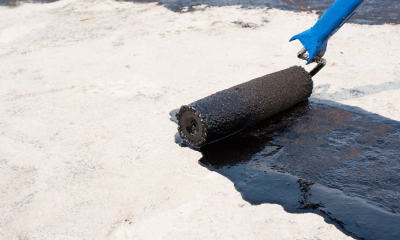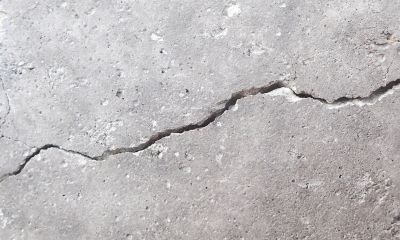A comprehensive guide to fireproofing concrete and protecting buildings from fire
According to the UK government’s Fire and Rescue Incident Statistics, there were 272 fire-related fatalities in the year ending March 2022. What’s more, over 63,000 primary fires (including incidents in non-derelict buildings and outdoor structures) occurred during that period [1], clearly displaying a lack of concrete fireproofing. These stats go to show that, above prolonging the life of buildings and preventing costly damages, lies the responsibility to ensure the people inside them are looked after by stringent fire safety measures. Especially because this year saw the highest number of building-based fires since 2017, which is when the Grenfell Tower tragedy shook London. Here is our comprehensive guide to fireproofing concrete and protecting buildings from fire – we hope you find it insightful. If you have any queries about our specialist fireproofing services, please call our expert team on 01482 425250
What does fire do to concrete?
It can be hard to imagine a super-strong material like concrete suffering any kind of damage, especially due to a freak fire. But it’s true – fire can damage concrete just as it can wreck wood, melt steel, and destroy other types of structural details. Fire damage to concrete can include:
- Cracking – which can split deep into the foundations and comprise the integrity of a structure, even leading to collapse. Cracking usually happens when the hot foundations are sprayed with cold sprinklers, hoses, or extinguishers [2].
- Discoloration – blackening, charring, damage to concrete design and aesthetics. This is typical of fire damage.
- Spalling or fragments breaking off – this is aesthetical damage and is only a concern if the steel behind the concrete is exposed to the blaze.
If your building or structure has recently suffered fire damage, our expert team will happily complete a free assessment to determine any concrete damage. Kindly call 01482425250 to arrange your free feasibility study and cost analysis today.
Is concrete fire resistant in any capacity?
Categorised under European Standards, concrete is an A1 material, which is the highest level of fire resistance and is completely non-combustible. Furthermore, concrete is non-toxic, free of flammable gases, and is a low thermal conductor – making it adequate at protecting itself from extremely hot temperatures for a limited amount of time.
Presuming the rest of the structure is properly fireproofed and free of flammable and non-combustible materials, a concrete structure can withstand fire for up to 4 hours unassisted before it begins to break down. After this period, the reinforcement can be affected, resulting in damage and collapse [3]. Although all concrete is naturally resistant to fire, some types can withstand it better, such as thick and dense carbon aggregate.
How to protect a building from fire
If a fire should start in a commercial building, the main priority is to ensure the structure withstands the blaze until it can be stopped, along with making sure tools are available to quell it as soon as possible – i.e., fire extinguishers and sprinkler systems. Because fires are largely accidental and cannot be foreseen, the only option is to take preventative measures in protecting buildings from fire – giving the structure, its contents, and any individuals inside a good chance of surviving it.
In many cases, large commercial buildings and structures require extra fireproofing and fire protection measures.
Use specialist concrete fireproofing applications
Aside from building with a carbon aggregate, the most fire-resistant of concretes, concrete fireproofing can also be completed by:
- The use of intumescent paint or intumescent board systems
- The application of lightweight mortar to exposed concrete
- The installation of a high-quality sprinkler system
- A well-thought-out fire safety plan with working fire alarms, the correct extinguishers, signage, etc.
- Compliance with UK fire safety regulations for buildings
Read our recent case study: Wolverhampton Tower Blocks, where we installed carbon fibre strengthening for a new a sprinkler system along with other fire safety measures
Avoid the use of flammable materials
There is a relatively long list of flammable materials in construction – that is, materials that are likely to combust, ignite or burn when exposed to extreme heat and/or fire. Although the use of these materials can’t always be avoided – it’s vital that they are not exposed if a fire should occur, and sometimes – they can be the cause of the fire. This can be avoided by positioning them away from exits, heat sources, or electrical equipment.
Combustible materials include:
Wood
Rubber
Plastic
Non-combustible materials include:
Concrete
Cement
Masonry
Stone
Sand
Glass
How to protect concrete panels from fire
Although concrete panels are already sufficient in fending off fire – or for at least 4 hours, there are ways to offer further protection. At CCUK, we normally advise the use of intumescent paint or the application of a thin layer of lightweight mortar.
Know your fire safety regulations for buildings
Knowing your fire safety regulations (or ensuring your contractor has followed them) is another way of increasing the fire protection of your building or structure. The UK government regularly updates these guidelines, which can be found on the official .gov.uk website
Concrete fireproofing specialists near me
Has your commercial building or structure recently suffered fire damage? Are you conscious that your building is not adequately fire-proofed? Kindly get in touch with our expert team to book your free feasibility study and cost analysis today.
Suggested reading for you based on `fireproofing concrete`
Grenfell: Structural Fire Protection Methods
Why Concrete is More Than Raw Material
References:
[1] Fire and rescue incident statistics: England, year ending March 2022 – GOV.UK (www.gov.uk) [2] How Does Fire Affect Concrete Structures? (hp-eng.com) [3] Behaviour of Concrete in Extreme Fire – The Constructor



